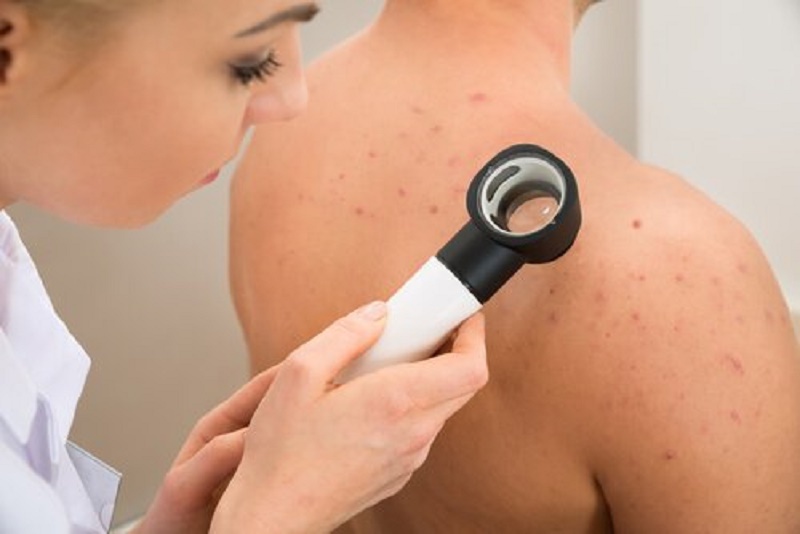Chalazion is a type of eye condition that many people confuse with a stye, although their symptoms are different. Also, it receives the name of lipogranuloma of the gland of Meibomio. It is quite common that a previous sty is the cause of the same, although not always this way. The inflammation of the Meibomian glands produces it due to an obstruction of the glandular orifices. Here, you will know how to get rid of a chalazion.
This condition is not infectious. At the moment when the glands are blocked, the sebaceous secretions cannot circulate, causing the area to swell. If the problem worsens and the Chalazion increases in size considerably, this could cause problems of blurred vision or astigmatism.

How to get rid of a chalazion?
We can perform simple tasks that will prevent us from having a chalazion in the future:
Diet: It is demonstrated that a diet rich in omega 3 acids will act as a preventive measure against this disorder.
Correct eye hygiene: Always maintain good eye hygiene. For this, you must use special wipes and take great care of the inner area of the eyelids.
Reviews: It is important to go regularly to the ophthalmologist so that you can carry out the pertinent reviews. In case of any anomaly, it is convenient to go to the consultation immediately before the problem worsens.
Study of other lumps: Other lumps, such as a stye, Milia, Xantelasmas or Syringomas can lead to confusion, so the doctor should study the case in detail.
With all this information you will have it easier to combat the problem.
How to differentiate a chalazion from a stye?
- The stye is the result of an infection, while the chalazion is a process that produces inflammation in the area of the eyelid.
- The stye causes pain to the touch, but not the chalazion.
- The treatment of both disorders is different. The most advisable is to go to the ophthalmologist before any problem that is noticed in the eyelids. A quick diagnosis will eliminate the disorder before it gets worse.
From this point we are going to focus on analyzing the chalazion and we are going to leave aside the stye.

What produces a chalazion?
Many causes could cause it, although they are not always easy to identify. It is quite usual to occur in people who suffer from rosacea or blepharitis.
Rosacea is a disorder that affects the face, causing a marked redness and swelling under the dermis. Patients suffering from rosacea may have other eye problems, such as chalazion or blepharitis. Besides, the disease could also affect the cornea or the sclera.
Some studies assure that these problems could have their origin in microorganisms. It proliferate in the roots of the eyelashes, with the objective of increasing the inflammation of the eyes.
What are the symptoms of chalazion?
Although they can be presented without showing any symptoms, these are the most common:
Packages: We will find a lump on the eyelid that has a marked red color and can cause it to swell. Although it will not cause pain, it is sensitive to touch.
Inflammation: In extreme cases, it could cause the eyelid to swell completely.
Blurred vision: If the size of the chalazion is very large, it could act on the eyeball, which would result in a problem of blurred vision.
The truth is that anyone could suffer a chalazion at any time of their life, although certain factors make it more likely:
- Blepharitis: This disorder affects the area around the eyelid. People with blepharitis have it easier to develop a chalazion (or several).
- Styes: It is also possible that the chalazion is derived from a present stye.
- Skin conditions: Some skin conditions, such as acne, high amount of sebum, rosacea, will increase the chances of suffering it.
- Medical problems: Certain medical problems, such as diabetes, could also be precursors of a chalazion.
Treatment of chalazion
The treatment of chalazion will depend on its severity. In very serious cases, surgery may be required.
Application of warm water compresses
To relieve the inflammation that it produces we can apply warm water compresses following these steps:
1) We moisten a cloth in hot water and then place it on the eyelid to keep it that way for 10-15 minutes or so. We will follow this routine 3-5 times a day.
2) It is necessary to avoid that the cloth cools a lot; for this, we will dip it repeatedly in hot water.
3) We can improve the situation by applying a gentle massage in the area where the Chalazion is located. Of course, make sure that your fingers are completely clean to avoid further aggravating the problem.
Antibiotics
If the doctor recommends it, it is possible that the patient has to take antibiotics to treat the inflammation. Prevent it from going any further.
Injections
In case the inflammation is very high, and that even gets to press the eyeball, you can apply an injection of cortisone steroids).
Surgery
If all the previous treatments have been followed but still, the Chalazion does not remit and is affecting the vision. Resorting to surgery will be necessary. It is possible that fluids have accumulated inside it and that these will not disappear on their own, so you have to carry out a drainage technique.
This surgery will be carried out with local anesthesia in the area where the Chalazion is. Always in medical consultation in a hospital, in an ambulatory or specialized clinic.
It may be the case that it reappears again and again; If this happens, it will be imperative that the professional perform a biopsy. Remove it and use a piece of tissue to study it in detail). This will serve to analyze if there is a more serious problem and to be able to act accordingly.




